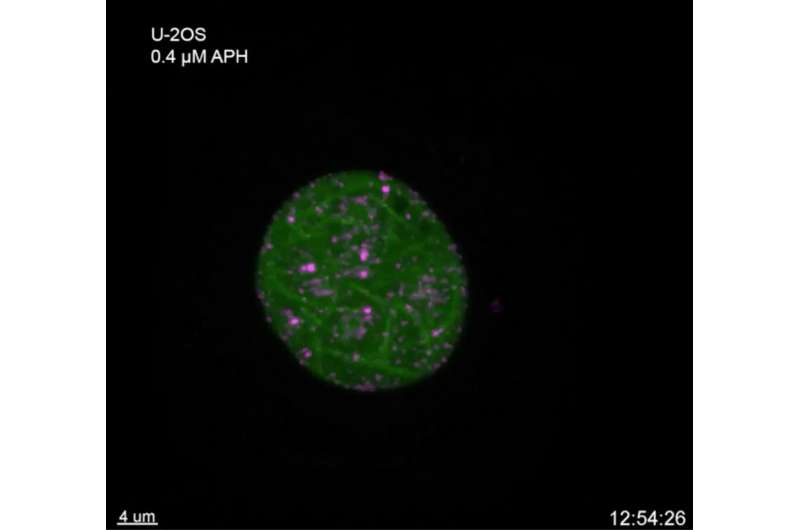Discovery shines light on how cancer cells could protect themselves

Sydney researchers have found cancer cells can repair their DNA by using 'cables' in their nucelus. The findings open new possibilities for designing future cancer treatments.
Researchers at Children's Medical Research Institute (CMRI) in Westmead, Sydney, have made an unexpected discovery about cancer cells and how they harness 'cables' in a cell's nucleus to aid DNA repair and replication.
This finding, published today in Nature Cell Biology, will help spark efforts to produce new tailored therapies to kill cancer cells.
Dr. Noa Lamm, lead scientist on this project, was inspired to become a cancer researcher after losing her mother to the disease. She spent more than four years working on this discovery that revealed an unexpected function for the protein actin. Actin is well known as the protein that interacts with another protein called myosin to make muscles contract. Actin also forms cables inside cells that connect up and function like girders in a building, contributing to the structure and shape of cells.
Dr. Lamm is a part of the team from the University of Sydney's Faculty of Medicine and Health.
While scientists have known for decades that actin plays this critical role in the main body of the cell, its role in the cell's control center, the nucleus, has been controversial.
For cancers to grow, cancer cells need to make many new copies of themselves. Every time this happens, the DNA in the cancer cells' nuclei must be replicated.
Dr. Lamm says whether actin played a role in DNA replication was not known but her previous work as a Ph.D. student suggested actin may have an unexpected nuclear function. Her new research has shown that this hunch was correct.
DNA replication in a cancer cell is like an old car traveling at its top speed—it frequently breaks down and has to get restarted. Cancer chemotherapy exploits this weakness in cancer cells by making the process break down even more frequently in an attempt to destroy them.
Dr. Lamm found that when cancer cells encounter problems replicating their DNA, actin cables form inside the nucleus. This allows the nucleus to change shape and increases the ability of the cancer cell to repair its DNA and restart the replication process.
Using advanced super resolution microscopy, the researchers showed that damaged DNA slides along the actin network to move to areas in the nucleus where repair occurs most efficiently. Scientists were previously unaware that cancer cells protected themselves in this way. Critically, this research found that actin performed these unexpected functions in response to treatment with chemotherapy and helped cancer cells resist the treatment.
Dr. Lamm believes there are two ways this discovery will help cancer patients. First, treatments that disable the actin cable mechanism could kill cancers that already have difficulty maintaining a high rate of DNA replication. Second, adding treatment that interferes with the actin cables to commonly used chemotherapies will enhance their success rate.
Part of Dr. Lamm's motivation to become a cancer researcher arose from her own personal story. Her mother died of cancer when she was young.
"It was extremely hard, especially as a kid, to watch the person you love and depend upon the most, dying—and there was nothing you could do about it," she said.
Now she feels excited to have found a new approach for treating cancer.
"Science is very creative. You get the feeling that you are doing something that no one else is, because no two scientists will ask exactly the same questions," said Dr. Lamm
"It's exciting to understand something that was not known before. We are very hopeful this will be a big step forward, because all progress starts with basic discovery."'
More information: Noa Lamm et al. Nuclear F-actin counteracts nuclear deformation and promotes fork repair during replication stress, Nature Cell Biology (2020). DOI: 10.1038/s41556-020-00605-6


















